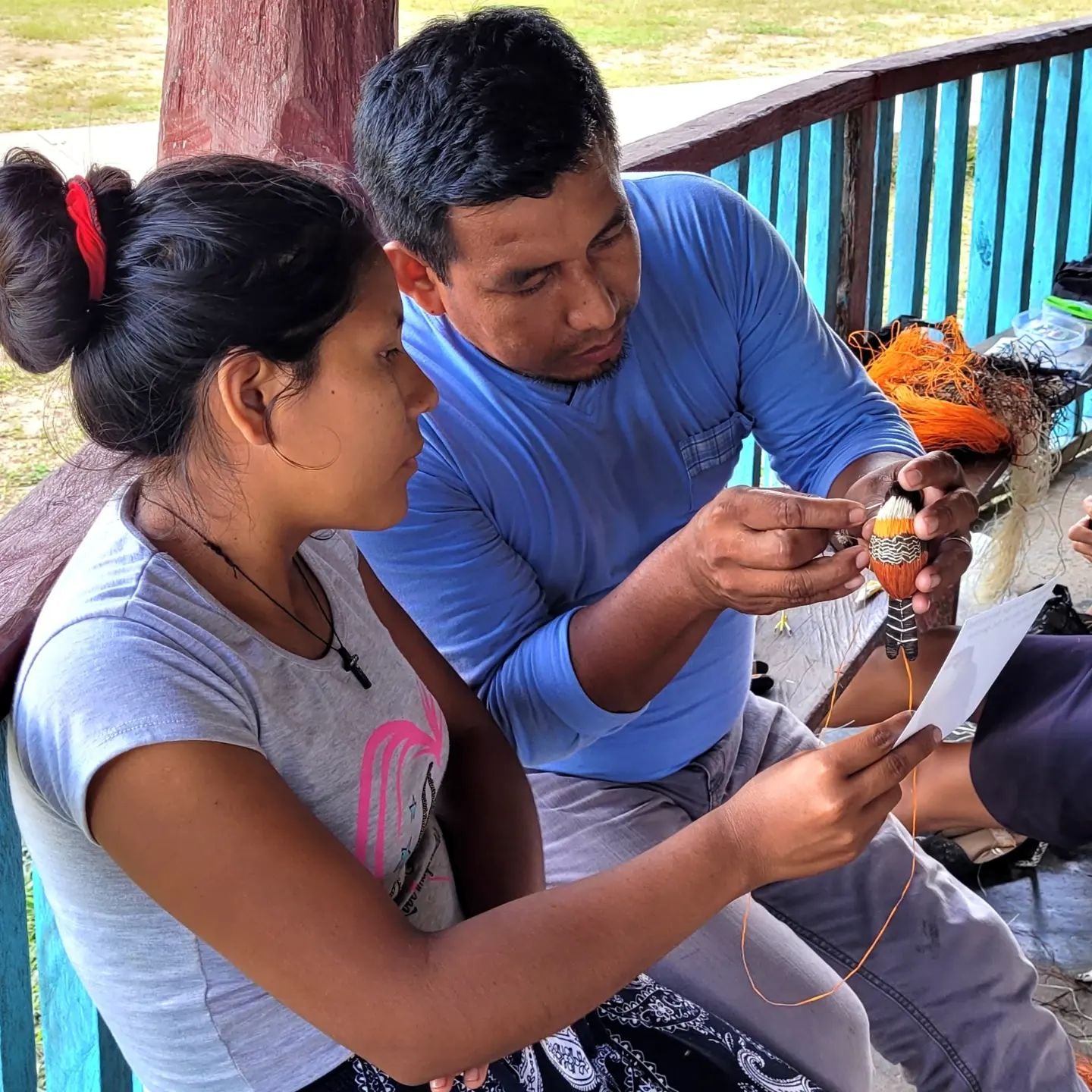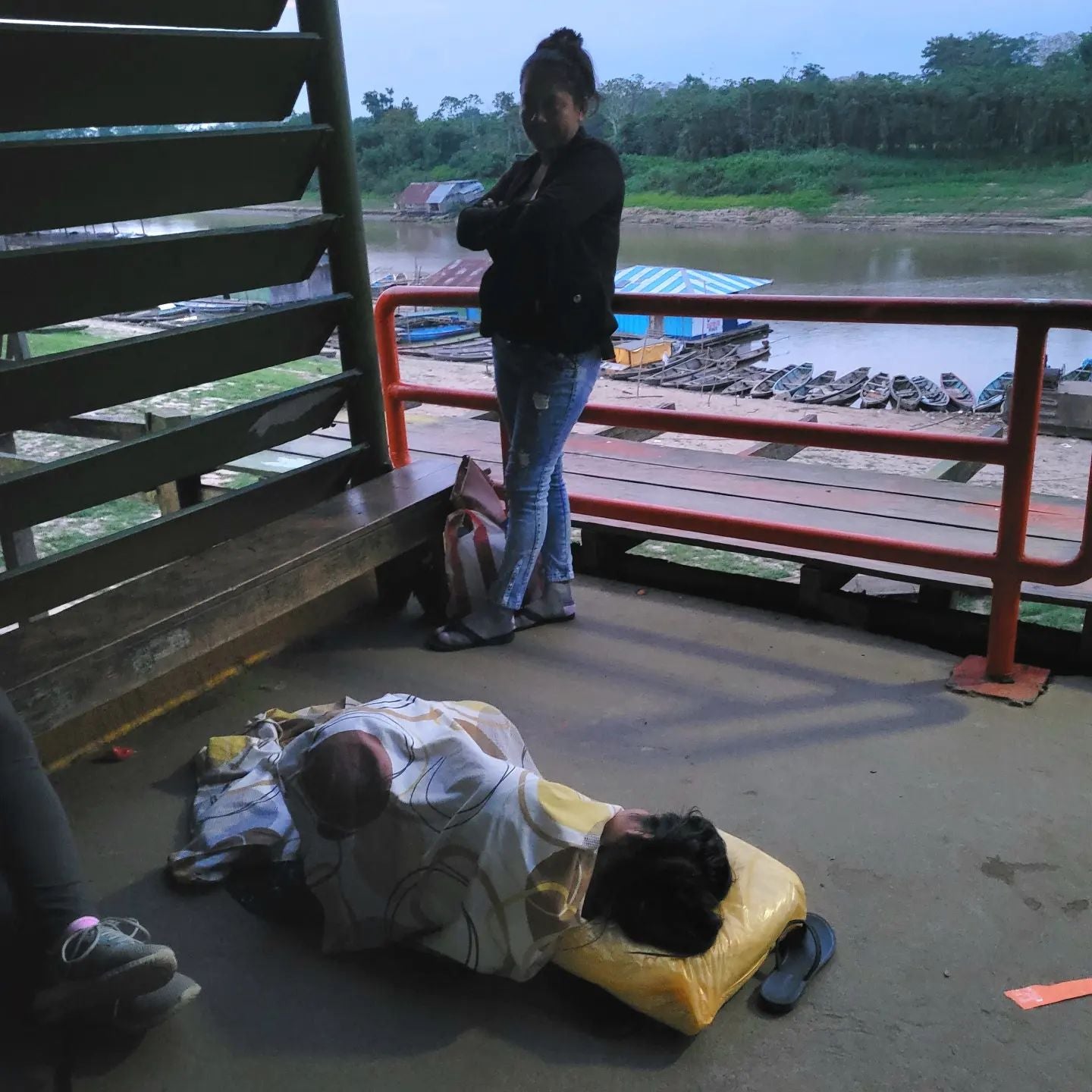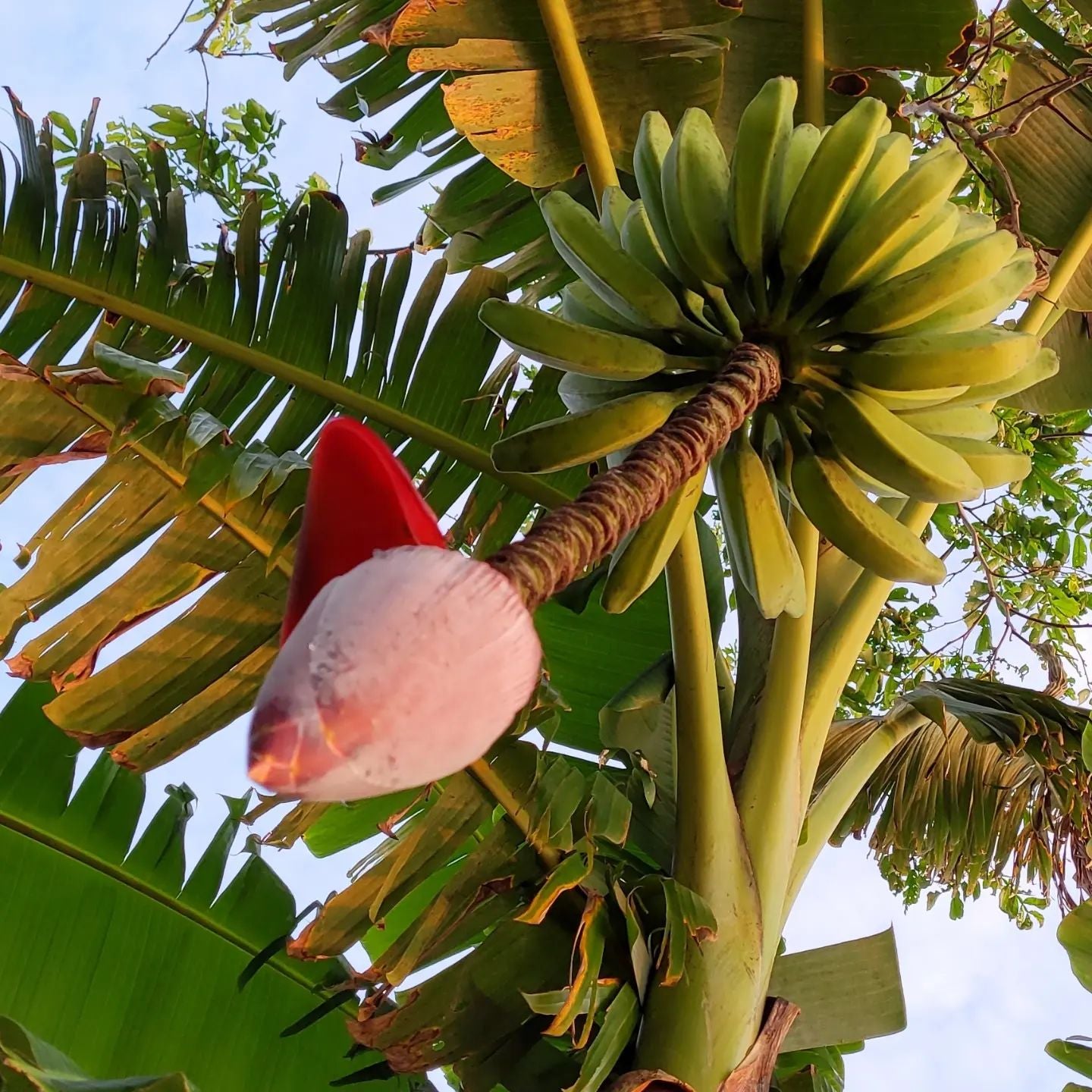by Campbell Plowden
October 12, 2022
Our next attempt to prepare a new cadre of artisan teachers took place in Amazonas village on the Marañon River with 29 participants from 7 villages – only half of whom were experienced artisans. Doilith stayed in her usual role to show five women how to make chambira butterflies for the first time while three artisans from San Francisco took on facilitator duties for small groups tasked with making three birds.


It was great that we had three men from the Ampiyacu in the group making the purple gallinule. They were all eager to improve their skills and with guidance from Pablo and input from me to include more green in the wings and tail, they made the best ornaments of this species that have ever been produced. I was disappointed that none of the three women artisans from the Ampiyacu we had invited to attend this training were able to come.

Wenceslao is a talented artisan who had been a facilitator trainee before so it was great to see him gaining confidence in this role leading his group making the American kestrel. Edson led his group making the orange breasted falcon. It was good to see him again since our relationship with this key artisan leader and regular facilitator had been rocky over the past year.


On the second day, we posted our favorite “5 Steps to Accompany an Artisan” in a training (Explain, Show, Observe, Comment, Affirm) along with a more comprehensive “Responsibilities of Artisan Facilitators” I had written up that morning. The first item was “Show respect for artisans from all communities and cultures.” It was prompted by hearing that one of our participants had made derogatory comments about some native artisans at a previous gathering. We strongly encourage our artisan facilitators to go through Alternatives to Violence Project training to be more conscious about the impact of their words and actions, but we can’t require it.






